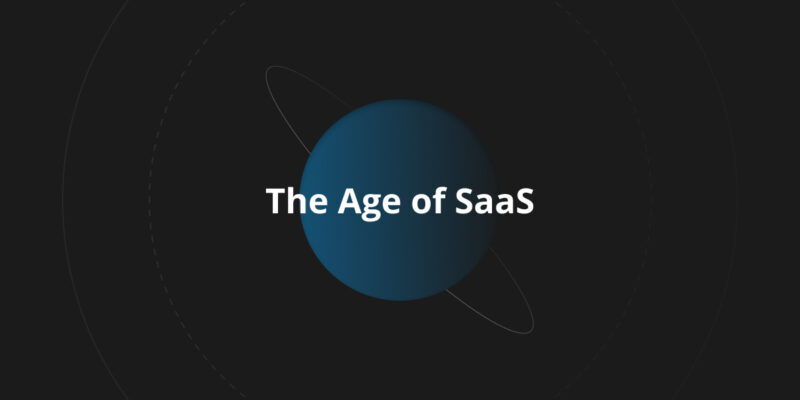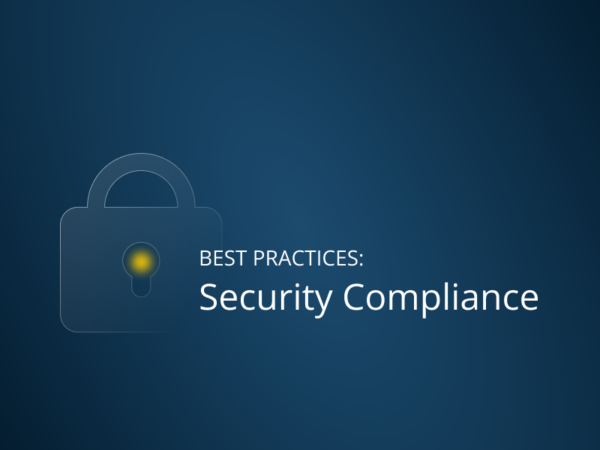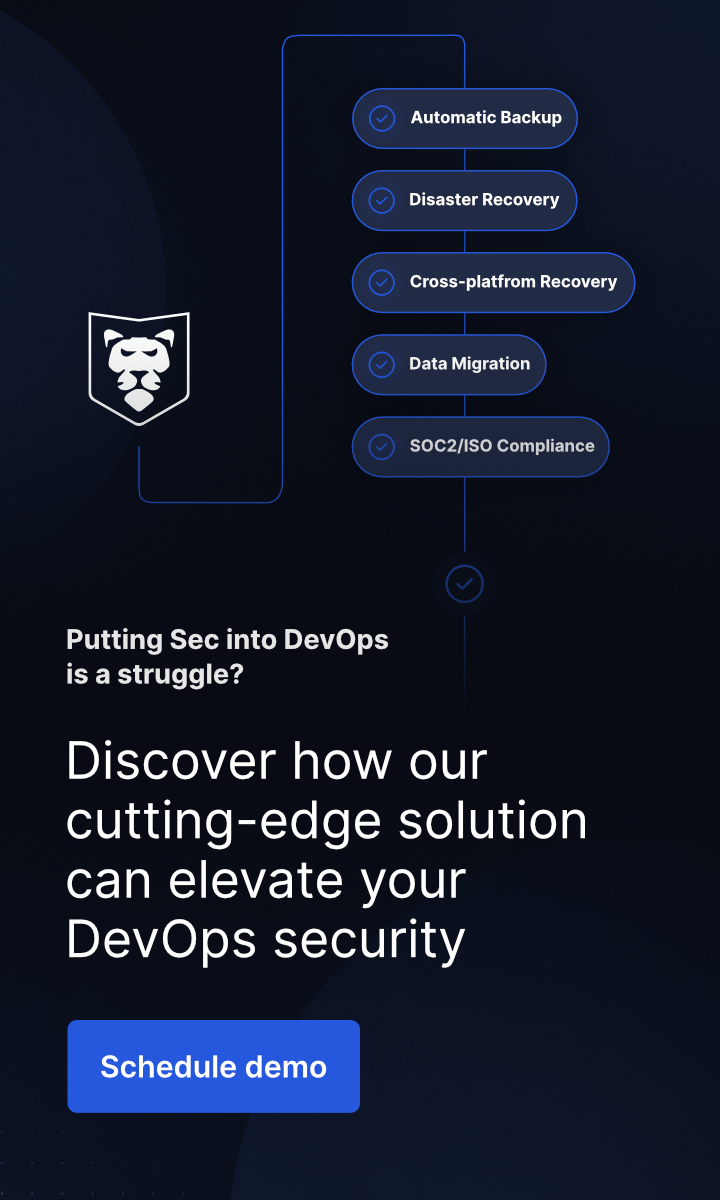
The Age Of SaaS: How To Protect Your Data
Last Updated on March 8, 2024
With years cyber criminals have become more and more sophisticated in their attacks. Almost every day the leading tech magazins are publishing articles about cyber threats, like phishing, vishing, ransomware or other hostile actors’ attacks. Let’s us just remind you about a hacker attack on Okta, Dropbox breach, and Toyota data breach. All those cyber incidents can potentially lead to stolen data credientials or loss of sensitive data at all.
Moreover, threat actors don’t hesitate to use human error, malicious software and vulnerabilities tracked in software to access sensitive data. According to IBM’s Cost of Data Breach Report 2023 the global average cost of a data breach in the mentioned year is $4,35 million. The amout of money organizations spent on dealing with consequences of data breaches has been constantly growing and has a 15% increase over the last 3 years.
Is it possible to mitigate security risks? How to save your SaaS solution? Let’s take a closer look on why organizations opt for SaaS, its advantages, and how to address the growing concerns surrounding cyber threats and data protection. Let’s look at real-life strategies that can help you protect your important data assets.
Software-as-a-Service: why do companies go for it?
Simplicity and efficiency… Probably, they are the main features that make SaaS attractive for organizations aiming to streamline operations, cut IT infrastructure costs, and secure sensitive information. What’s more, the adoption of SaaS solutions can improve collaboration and enhance agility.
| The advantage of SaaS | How you can benefit |
| Limitless Accessibility | SaaS offers unrivaled accessibility, allowing users to access programs from any location with an internet connection. |
| Scalability for Individual Solutions | It provides flexibility allowing companies to modify software usage and subscription plans to meet changing demands. |
| Cost-Effective Software Delivery | By using a subscription-based approach, SaaS removes large upfront investments in hardware and software licensing. |
| Seamless Updates and Maintenance | Manual software upgrades and maintenance are no longer necessary. This role is assumed by SaaS providers, who ensure that consumers have uninterrupted access to the most recent features and the latest security patches. |
| Multi-Tenancy Efficiency | SaaS applications are designed to service numerous consumers on shared infrastructure, resulting in cost reductions and resource optimization. |
It sounds nice, but what about security?
In traditional software deployment models, you are the owner of your data. Usually you keep your sensitive data on-site on your internal server. So, data protection and equipment where this data is kept are fully on your shoulders.
Though, when you opt for a SaaS deployment model, you may mistakenly think that your SaaS provider is fully responsible for your data security. But, as we have just mentioned, it’s “mistakenly”… All SaaS providers operate within the Shared Responsibility Model. It means that the SaaS provider takes care of its operating systems, network security and connections, applications, network and data centers, physical hosts, and partly for identity and directory infrastructure. So, to make the long story short, SaaS providers are responsible for the protection of the entire ecosystem, but not for the separate account domain.
So, who is responsible for your account security and its data protection? Of course, you are.
Here you can read more about the duties that you share with SaaS providers:
📌 GitHub Shared Responsibility Model and Source Code Protection
📌 Atlassian Cloud Shared Responsibility Model: Are you aware of your duties?
SaaS data security: what security measures do SaaS providers adopt to protect data?
To prove their reliability and trustworthiness, SaaS providers regularly comply with data protection regulations, like General Data Protection Regulation (GDPR), and undergo regular security audits to obtain such certifications as SOC 2 Type I and SOC 2 Type II, HIPAA, ISO 27001, etc. Moreover, they take other security measures, among which we can enlist:
Data encryption to protect data in-transit and at-rest
Encrypted data is one of the layers of data protection. That’s why, to ensure that data remains confidential while in transit, SaaS providers use protocols like TLS/SSL to encrypt users’ sensitive data. What’s more, to protect sensitive information from unauthorized access, SaaS providers encrypt data stored on their servers at-rest.
Access controls as a preventive measure
To be sure that only authorized users can access sensitive data, SaaS providers implement access controls like authentification through strong passwords, 2FA, role-based access controls.
Vulnerability management, SIEM and IDS
As it’s impossible to avoid vulnerabilities, SaaS providers constantly and actively monitor their systems and networks for security vulnerabilities, and perform penetration testing to identify and address security weaknesses.
As soon as the vuln is found, SaaS providers try to quickly apply patches and updates to address any potential weaknesses threat actors can use to steal users’ sensitive data. For example, in our blog post 2022 In a nutshell: Atlassian outages and vulnerabilities you can see how Atlassian was dealing with detected vulns.
Moreover, all SaaS providers use Security Information and Event Management (SIEM) to monitor and analyze security incidents in real time. Such SIEM systems help service providers take rapid action in response to security threats.
To protect their ecosystem against unauthorized network access, service providers use firewalls and Intrusion Detection Systems (IDS). They help SaaS providers’ security teams to detect and respond to potential threats faster.
Data backups and redundancy of SaaS providers’ sensitive data
To be able to pass security audits like SOC 2 and ISO 27001, SaaS providers should maintain regular backups of their sensitive data and critical infrastructure to prevent data loss in case of system failures or disasters. Hovewer, outages still take place: a massive GitLab outage in 2017 after a data deletion incident or a two-week-long Jira outage in 2022 due to a human mistake, and the list we can continue.
Service providers, as we already mentioned, follow the Shared Responsibility Model – they are responsible for the stability of their systems, and the security of their critical data. So, backups that service providers perform are aimed at protecting their sensitive information.
How to protect data in SaaS: the most effective ways to ensure SaaS data security
As you can see, SaaS providers often ensure the platform’s security, which includes infrastructure, physical, and application-level protection of the entire service. On the other hand, when it comes to users’s data, they are required to protect their own accounts and sensitive data. Don’t forget about the mentioned Shared Responsibility Model.
For that reason, you, as a user, can implement extra safety precautions and follow security practices applied, or SaaS environments. Which exactly? Let’s take a look…
Keep track of all of your processing actions
When it comes to SaaS data security, the first thing that should be mentioned here is the importance of self-auditing. And, a Record of your Processing Activities (RoPA) can be of great help here (by the way, it is an obligatory document within GDPR).
So, it means that your organization should have a single document that lists absolutely each data-processing task your organization performs, or any other data on actions carried out by third parties that can process your personal sensitive information.
Having such a snapshot, you will be able to easily keep track of all your data processing activities, and should a dangerous situation appear, you will be able to respond fast to those threats, mitigating the risks, and guaranteeing your data security.
Establish a policy of secure authentication protocols and strong passwords
By setting up authentification protocols and a secure password policy, you can minimize the chance of data breaches. That’s why it’s crucial to make sure that any member of your team who has set up his account in the SaaS service your organization uses knows the main requirements for secure passwords, and doesn’t use the same password in a few apps.
Let us remind you that secure passwords usually have a mixture of upper and lower-case, numbers, and special characters. Moreover, it’s worth enabling multi-factor authentication, SAML SSO, and also use a safe password manager.
Leverage CASB Tools and Network Security measures
Cloud access security broker (CASB) tools, along with network security measures improve your data protection by overseeing and controlling the flow of data between organizations and SaaS applications. Such tools ensure compliance with security policies, identify threats, and provide insights into cloud usage. Thus, you can enhance both data and network security while also improving access control.
Organize regular security training for your employees
To eliminate any possibility of a human error that can lead to data loss or data breaches, it’s important to organize regular training for your staff. It’s important to be sure that all your employees follow security measures established by your organization.
Insider data breaches or unintentional human error can happen as the result of a lack of knowledge and education. Thus. regular security training is an essential part of a secure working environment.
Adopt Situational Awareness
SaaS security requires situational awareness. It means recognizing and analyzing existing security threats and dangers to be able to respond to them quickly. This proactive method involves constant monitoring of the organization’s security measures, threat information collecting, and analysis. All of that will help in protecting data.
Monitor users and their roles on a regular basis
As a rule, SaaS providers permit you to assign different roles to your team members, depending on their position and duties. So, it’s vitally important to regularly check who has access to your sensitive data and restrict access to those who should have it. Thus, you can avoid accidental or intentional exposure of your sensitive information and data breaches.
Make sure that your SaaS provider is compliant with security standards
We have already mentioned that SaaS providers try to stay compliant with international security standards. That’s why, when you’re planning to use any SaaS solution it’s worth checking what security audits it has passed. It will tell you more about how that service solution protects your sensitive data.
Moreover, it’s always important to check the Privacy Policies and Data Governance that the SaaS provider has. Thus, you will be able to understand if you need to take any other additional data protection measures.
So, don’t hesitate and assess the security posture of your SaaS providers: evaluate its infrastructure, data protection measures, and incident response capabilities before selecting one.
Check your SaaS provider for third-party software compatibility
Sometimes it can be crucial to integrate some other tools with your SaaS provider – it can bring mobility, better collaboration on a project, productivity, or enhanced security. So, before choosing your SaaS provider, don’t forget to check what third-party tools you can intergate to improve your workflow and make team’s life easier.
Build a backup and Disaster Recovery strategy
Addressing the risk of data loss is a priority for SaaS providers and users may mistakenly think that if their data is corrupted, their GitHub, Bitbucket, or GitLab (you can put any SaaS provider here) is able to recover it – but that is a myth which we already have debunked in our DevSecOps MythBuster series. SaaS providers share the responsibility of data protection with users, and back up of their sensitive data is the responsibility of the users. That’s why SaaS providers usually advise users to have a backup strategy themselves. Let’s take a look at what Atlassian says in its Security Practices about users’ backups:
“We do not use these backups to revert customer-initiated destructive changes, such as fields overwritten using scripts, or deleted issues, projects, or sites. To avoid data loss, we recommend making regular backups.”
You can create your own backups, but it can be time-consuming and doesn’t guarantee Disaster Recovery, or you can opt for third-party backup solutions, like GitProtect.io, which will help you reduce your responsibility of data protection, as a backup provider will take care of accessibility and recoverability of your sensitive information.
So, building your backup strategy (if you decide to do it by yourself) or choosing a backup software, make sure that you or your backup provider follows secure backup best practices, that include:
- automated backups that can be scheduled to meet your RTO and RPO – there should be the possibility to set full, differential, or incremental backups,
- full data coverage that guarantees that you can back up all the data you have
- ability to assign as many storages as you need to meet the 3-2-1 backup rule or other backup rules including the 4-3-2 or the 3-2-1-1-0 backup strategies,
- AES encryption that permits you to encrypt your sensitive data during the backup process in-flight and at rest with your private key, so that if your data is intercepted, it will remain unreadable and secure, as you’re the only one who knows the key,
- ransomware prevention measures,
- long-term or even unlimited retention that can help your organization to build a reliable retention policy to meet your compliance requirements.
- DR Technology which guarantees that in any event of a disaster, you can easily restore your sensitive data quickly (point-in-time restore, granular recovery, cross-over recovery, etc.) guaranteeing your disaster recovery plan ensures business continuity.
If you are curious about how to build your backup strategy in more detail, take a look at our blog posts related to this topic:
📌 GitHub backup best practices
📌 Bitbucket backup best practices
📌 GitLab backup best practices
📌 Jira backup best practices
Regularly update your DevOps environment
SaaS providers regularly scan their platforms for vulnerabilities and once it is found they release updates. So, don’t hesitate to check if there are any new patches that your SaaS provider has – it’s for the sake of your sensitive information and data security.
Summary
Protecting critical data is always a top priority of any organization. While SaaS brings accessibility and cost-efficiency, it also raises concerns about data security due to the growing risks of breaches, attacks, and outages.
To make sure your digital data remains safe, it’s worth adopting security measures like constant monitoring, encryption, access controls, and data backup.
Don’t forget that data protection is a shared responsibility between SaaS providers and users. By striking the right balance between these protective measures and the advantages of SaaS, you can confidently utilize this innovative era while keeping your critical data secure and your operations running smoothly.
[FREE TRIAL] See for yourself – start a 14-day free trial 🚀
[LIVE DEMO] Let’s discuss your needs and see a live product tour







